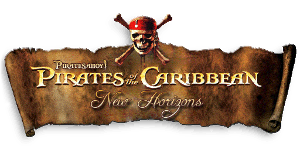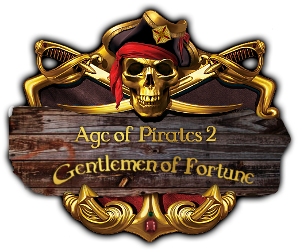Thagarr
Pining for the Fjords!
Creative Support
Storm Modder
Public Relations
Hearts of Oak Donator
Pirate Legend
On this day, June 23'nd, 1594, the 32 gun Portuguese carrack Las Cinque Chagas("nau" in Portuguese) burned, exploded and sank off the coast of Faial Island in the Azores, after a two day running battle with three English privateers. She was heavily laden with both people and cargo, she had over 1000 people on board, including 400 slaves. Cinque Chagas had been part of a 3 ship fleet that set sail from Goa heading for Portugal in late 1593. The other two carracks, the Santo Alberto and Nossa Senhora da Nazareth, both sprung fatal leaks and were beached off the coast of Mozambique. Their cargo's, passengers and crews were taken aboard the Cinque Chagas, making her one of the richest prizes and one of the most heavily laden ships ever sunk.
The British ships Royal Exchange, Mayflower and Sampson on the prowl spotted Las Cinque Chagas off the Azores around noon on June 22'nd and quickly gave chase. They exchanged canon and musket fire over the course of the rest of the day and through the night. On three separate occasions, the English tried to board her but were repelled each time by the overwhelming numbers of Portuguese aboard the carrack.
During the course of the battle, the ships had been lashed together, and as crews died from cannon and musket fire, the losses mounted and bodies were literally piling up on the decks. The English ships could not sustain the losses and eventually were forced to give up the fight and cut loose. After the ships drifted apart, the English noticed that Cinque Chagas had no guns left and decided to try one final assault on the rich prize. Demoralized from the losses of men and wounded commander, the caraack was finally taken by the English, but the victory was short lived. During the fighting, the carrack had been set afire. The Portuguese were unable to dose the flames as the English sharpshooters would pick them off from the tops.

Map of the Azores.
The only eyewitness account available was written by Melchior Estácio do Amaral in 1604:

Carrack Madre de Deus [Attribution], by Marco2000 (Own work), from Wikimedia Commons. From the Maritime museum of Lisbon, a model of the carrack Madre de Deus, which probably looked quite similar.
The British ships Royal Exchange, Mayflower and Sampson on the prowl spotted Las Cinque Chagas off the Azores around noon on June 22'nd and quickly gave chase. They exchanged canon and musket fire over the course of the rest of the day and through the night. On three separate occasions, the English tried to board her but were repelled each time by the overwhelming numbers of Portuguese aboard the carrack.
During the course of the battle, the ships had been lashed together, and as crews died from cannon and musket fire, the losses mounted and bodies were literally piling up on the decks. The English ships could not sustain the losses and eventually were forced to give up the fight and cut loose. After the ships drifted apart, the English noticed that Cinque Chagas had no guns left and decided to try one final assault on the rich prize. Demoralized from the losses of men and wounded commander, the caraack was finally taken by the English, but the victory was short lived. During the fighting, the carrack had been set afire. The Portuguese were unable to dose the flames as the English sharpshooters would pick them off from the tops.

Map of the Azores.
The only eyewitness account available was written by Melchior Estácio do Amaral in 1604:
When the English realized just how fast it was spreading they new they had no chance and abandoned the vessel. Shortly afterward, the fire reached her magazine and the ship exploded, sending the overladen vessel to the bottom with all her riches. What remains of her and her cargo still sit on the bottom today as the wreck has yet to be found. Her cargo was worth an estimated at least 2 million in gold, pearls, spices drugs and other precious goods. Estimates put the value in todays money at over $1 billion us dollars.the sea was purple with blood dripping from the scuppers, the decks cluttered with the dead and the fire raging in some parts of the ships, and the air so filled with smoke that, not only we could sometimes not see each other but we could not recognize each other. all black and sooty from the fire and gunpowder.

Carrack Madre de Deus [Attribution], by Marco2000 (Own work), from Wikimedia Commons. From the Maritime museum of Lisbon, a model of the carrack Madre de Deus, which probably looked quite similar.
Attachments
Last edited:















